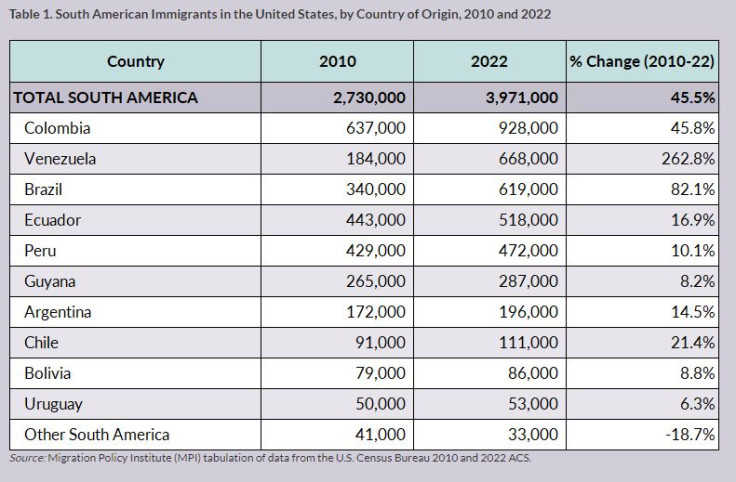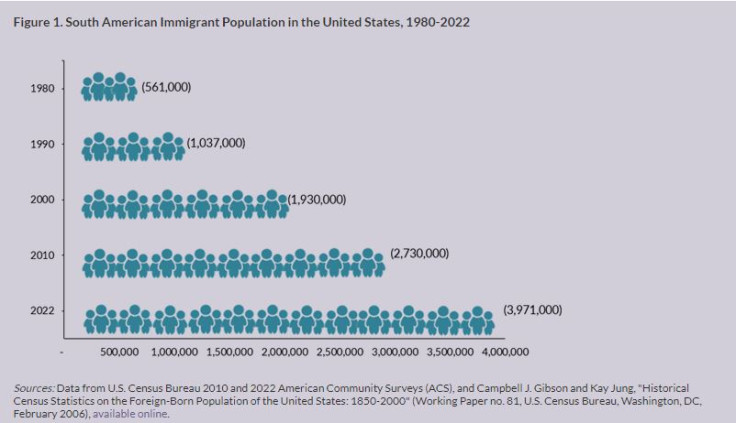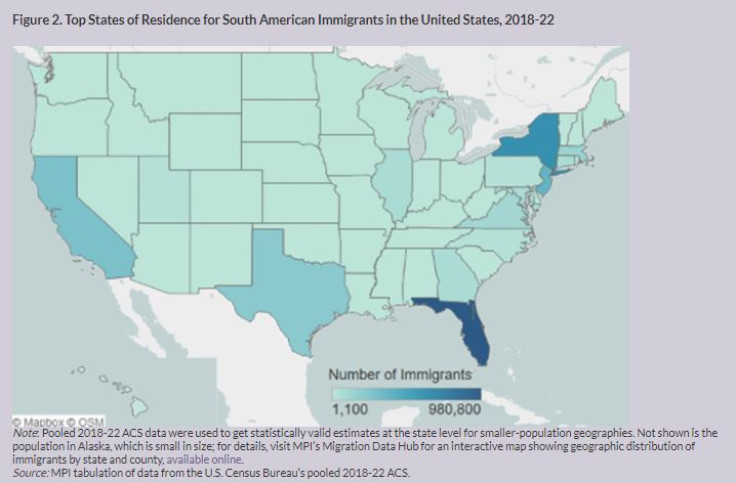
South American migration, especially from Venezuela, has been increasing, growing three times as rapidly as total U.S. migration from 2000 to 2022, according to a recent study released by Migration Information Source, the online journal of the Migration Policy Institute.
The spotlight, titled "South American Immigrants in the United States," highlights that, however, the nearly 4 million South Americans comprised just 9 percent of all 46.2 million U.S.-based immigrants as of 2022.
Researchers Julian Montalvo and Jeanne Batalova analyzed publicly available data from sources such as the U.S. Census Bureau's 2010 and 2022 American Community Surveys (ACS), with a specific focus on the Southern countries of Latin America.
They discovered that in 2022, four out of five immigrants from South America came from one of a handful of countries:
- Colombia (928,000 migrants)
- Venezuela (668,000)
- Brazil (619,000)
- Ecuador (518,000)
- Peru (472,000)
Between 2010 and 2022, the Venezuelan population surged the fastest of all South American groups in the United States (263 percent), far outpacing the expansion of other countries in the region. Following Venezuela, Brazil experienced a growth change of 82.1%, while Colombian immigrants saw a 46% rise.

As a result of this change, Venezuela rose from being the sixth-largest South American country of origin to the second largest.
"Recently, encounters of South Americans arriving without authorization at the U.S.-Mexico border have dramatically increased, corresponding with new instability in origin countries. In fiscal year (FY) 2023, U.S. Customs and Border Protection encountered Venezuelans 266,000 times at the southwest border, a more than fivefold increase over the 49,000 encounters in FY 2021," the report underscores.
According to the document, the initial wave of South American immigration to the United States dates back to the Cold War era, spurred by political turmoil, armed conflict, and economic instability in countries like Argentina, Chile, and Colombia.
Since then, migration from the region has been largely influenced by a combination of political, social, and economic crises, notably exemplified by the significant outflow of Venezuelans following the deterioration of conditions in their country beginning in 2015.

Today, out of the 17.6 million South American migrants worldwide, approximately 49 percent reside within South America, with about 23 percent in Europe and 22 percent in North America, as estimated by the United Nations Population Division in mid-2020. Approximately 3 percent reside in Central America and the Caribbean.
Outside of South America, the United States stands as the primary destination for South American migrants, hosting 20 percent of the total migrant population from the region.
Spain hosts the next largest population of South American migrants (13 percent), followed by Italy (3 percent), and Canada (2 percent), the study says.

Within the United States, over two-thirds of South American immigrants were concentrated in five states during the 2018-22 period, as per the report:
- Florida (27 percent)
- New York (17 percent)
- New Jersey (10 percent)
- California (8 percent)
- Texas (6 percent).
© 2024 Latin Times. All rights reserved. Do not reproduce without permission.







